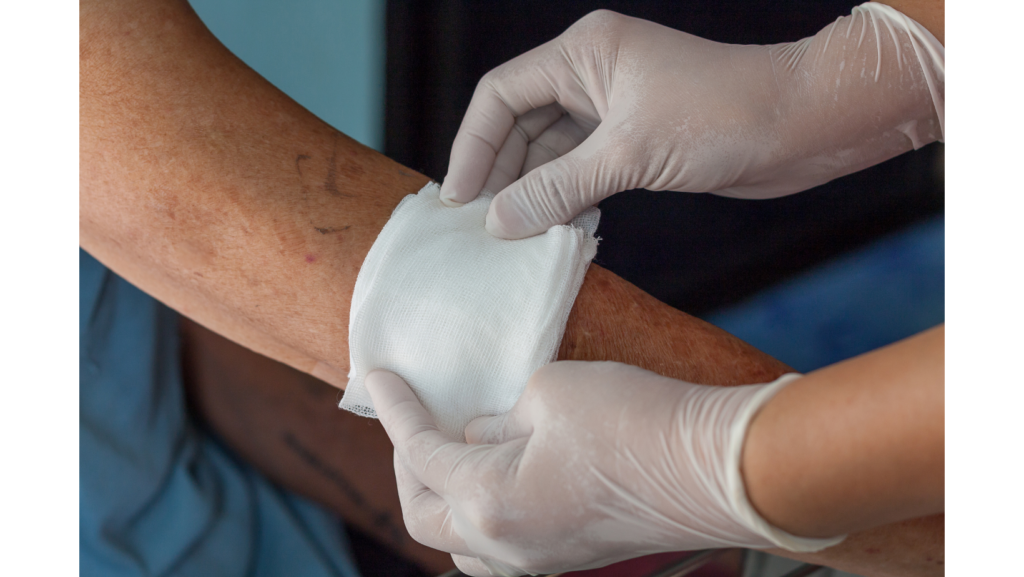Treating Cuts and Puncture Wounds: The first thing to do in cuts and puncture wounds is to check the severity. If the injury is deep, covering a large skin area, seek medical help immediately.
An sure sign of a severe wound is extensive bleeding or losing the feeling or sensation within the area. If the wound location is in the face or near the bone, or if there has a foreign object stuck in it, go to an emergency or urgent care right away,
However, less significant wounds can often be treated with simple first aid.
Cuts And Puncture Wounds
A cut or laceration refers to the breaking or opening of the skin. It may be deep, smooth, or jagged and appear near the skin surface. A severe cut can affect the muscles, tendons, ligaments, nerves, and blood vessels.
A cut may result from a fall, banging against a hard object, or touching sharp objects, leading to internal or external bleeding. A severe cut can bleed profusely and cause medical complications without prompt and appropriate treatment.
As opposed to cuts, a puncture wound is a forceful injury made by a sharp, pointed object that penetrates the skin. It is usually narrow with one or more hole-like marks – sometimes with swelling at the site. This type of wound is more easily treatable, and home first aid can sometimes be sufficient.
Various sharp objects can cause puncture wounds, with common culprits being common items such as nails, thumbtacks, sharp tools, knives and needles. Bite marks – from an animal or human – are also often classified as a puncture wound. These injuries quickly increase the risk of infection as they are hard to clean. The wound site also provides a warm, moist area for bacteria to grow.
Severe cuts and puncture wounds can result in excessive blood loss and organ damage, which can potentially be fatal.
Signs And Symptoms
Signs of cuts and puncture wounds may depend on the location and severity. Commonly associated symptoms of these injuries include:
- Skin redness
- Swelling on the surrounding area
- Pain at the wound site
- Mild to severe bleeding
- Skin discolouration
- Broken skin or marks (scratches, hole-like markings)
- Drainage or pus (after some time)
First Aid For Cuts And Puncture Wounds
Call Emergency Services
Minor cuts and punctures are often treatable at home. At the same time, severe wounds and lacerations – particularly from a point or edge that’s dirty or rusty – should receive treatment from medical professionals.
For severe bleeding and other warning symptoms, call triple zero (000) to ensure professional medical care is available quickly.
Control The Bleed
Minor wounds tend to stop on their own and will clot very quickly after the injury. On the other hand, significant injuries do not cease to bleed and can develop into a haemorrhagic shock.
Apply gentle pressure to stop the bleed and elevate the wound to reduce swelling.
Clean The Wound
Clean the wound site using soap and clean water to wash off all unwanted dirt and debris. Check it after and see if there are remains after washing.
Use a sterile pair of tweezers to take whatever dirt is left.
See a doctor for leftover dirt that you cannot remove.
Apply Antibiotics
Antibiotic creams and ointment are effective remedies to discourage infection and help boost the body’s natural wound healing process.
Apply a thin layer of ointment immediately after cleaning the wound.
Cover The Wound
The use of bandages can keep the wound clean and the harmful bacteria out. However, there is a need to periodically expose the cut to air to prevent the build-up of infection and to speed up the healing process.
Although many cuts and puncture wounds heal with basic first aid care, more significant wounds may require immediate medical attention. If there is heavy or spurting blood flow or if slower bleeding does not stop after 10 minutes of applying pressure, you should seek emergency medical care. Take note if the person’s basic functions seem to be impaired, and check the wound to see if muscle, tendon, or bone are exposed.
All these are indicators of a significant wound, requiring prompt emergency medical help.
Risk Of Infection
One additional factor to consider on broken skin is tetanus.
Tetanus is a potentially severe illness caused by a bacterium that enters the skin through cuts and puncture wounds. This infection is preventable through vaccination; however, the vaccine does not last forever.
Adults should get a tetanus booster shot every ten years. It is a good idea to consult with your doctor to make sure your shots are up to date.
Conclusion
Cuts and puncture wounds are common, and everyone should know how to deal with these injuries. Immediate and effective first aid care can prevent infection, promote healing, and prevent minor damage from becoming major.
Learn first aid for cuts, lacerations, and puncture wounds.
Visit First Aid Courses Darwin for more information.








